Conus
(Chelyconus) pelagicus (Brocchi, 1814)
Conus
(Chelyconus) pelagicus inflatus (Erünal-Erentöz, 1958)
Conus
erunalerentoezae (Landau et. al., 2013)
Conus
(Chelyconus) pelagicus karamanensis (Erünal-Erentöz, 1958)
Conus
(Chelyconus) karamanensis (Erünal-Erentöz, 1958)
Conus
(Chelyconus) coloratus (DeFrance, 1818)
Descrizione
e caratteristiche:
E’
una conchiglia di dimensioni da piccole a medie, la cui spira è
elevata, piana o poco convessa. L’ultimo giro presenta striature
alla base; l’apertura è stretta con il labbro leggermente arcuato.
Sulla superficie sono presenti linee trasversali di colore
giallo-arancio disposte in modo irregolare.
Nelle
sue osservazioni(1), Sacco notò come tutti gli esemplari
da lui studiati di Conus pelagicus fossero di dimensioni
medie; inoltre, notò come in alcuni degli esemplari più grandi del
Conus striatulus, un Conus di dimensioni inferiori
rispetto al Conus pelagicus, fossero presenti fini
lineette giallo-arancio che spesso si trovano sovrapposte a sottili
cordoncini, soprattutto verso la base. Ipotizzò quindi che il Conus
Pelagicus, conico-ovato, fosse la forma adulta del Conus
striatulus, conico-angolato, in analogia a quanto riscontrato nel
caso del Conus mediterraneus: anche in quest’ultimo caso
infatti, notò un passaggio dalla forma conico-angolata alla forma
conico-ovata.
Non
essendo supportato da sufficienti osservazioni, preferì lasciare le
due specie distinte.
Rossi
Ronchetti, 1955. "Ornato di sottilissime strie spirali,
alcune delle quali più rilevate ad intervalli regolari e colorate o
in giallo rossiccio o in grigio azzurrognolo, mentre macule pure
grigio azzurrognole sono distribuite irregolarmente sulla superficie.
Strie assiali incrociano le strie spirali, cosicché la superficie
appare irregolarmente quadrettata: esse hanno andamento sinuoso e
tendono a confluire all'estremità anteriore verso il margine
columellare".
Il
Conus anabathrum, il Conus largillierti e il Conus
philippii sono collegati al Conus pelagicus.
Distribuzione:
Nel
Miocene è presente in Piemonte.
Nel
Pliocene è abbastanza comune in Italia.
Nel
Pleistocene è rinvenuto in Toscana ed nel Lazio (2).
Conus
pelagicus
|

|

|

|
-
-
Conus
pelagicus
-
Taf.3
fig. 4 (11)
-
mm. 45 x 21
|
- Conus
pelagicus
(3)
|
- Conus
pelagicus
(6)
|


|
- Conus
pelagicus
(10)
-
TAV
XVIII – fig.4
-
n° i 4668, olotipo (h = 42,5 mm)
-
Museo Civico di Storia Naturale di Milano
|

|
- Conus
pelagicus
(7)
-
|
-

|
- Conus
pelagicus
(8)
-
6. Varioconus
pelagicus (Brocchi,
1814), NHMW 1847/0058/0624, locality 17, Seyithasan, height 73.5
mm
-
7.
Varioconus
pelagicus (Brocchi,
1814), NHMW 1847/0058/0625, locality 17, Seyithasan, height 53.2
mm
|
Conus
erunalerentoezae
Conus
pelagicus var. inflatus
|

|

|

|
- Varioconus
erunalerentoezae nov.
sp. (8)
-
paratype 8 RGM 777 894 (ex JvdV collection)
-
locality 17, Seyithasan (Turchia)
-
height 34.3 mm [p. 248]
|
- Varioconus
erunalerentoezae nov.
sp. (8)
-
paratype 1 NHMW 1847/0058/0974
-
locality 17, Seyithasan (Turchia)
-
height 46.8 mm [p. 248]
|
- Varioconus
erunalerentoezae nov.
sp. (8)
-
paratype 2 NHMW 1847/0058/0975
-
locality 17, Seyithasan (Turchia)
-
height 45.5 mm [p. 248]
|

|

|

|
- Varioconus
erunalerentoezae nov.
sp. (8)
-
holotype AÜ-LE-K-253 (Plate 78 fig. 6)
-
locality unknown, Karaman Basin, Turkey
-
Tırtar Formation, Serravallian, middle Miocene
-
(photo YI) [p. 248]
|
- Varioconus
erunalerentoezae nov.
sp. (8)
-
paratype 3 NHMW 1847/0058/0976
-
locality 17, Seyithasan (Turchia)
-
height 43.9 mm [p. 248].
|
- Varioconus
erunalerentoezae nov.
sp. (8)
-
paratype 4 NHMW 1847/0058/0978
-
locality 17, Seyithasan (Turchia)
-
height 42.4 mm [p. 248].
|
-
- In
the Turkish deposits this species is easily separated from
its congeners under UV light, when a very distinctive pattern of
spirally arranged dots of alternating size is easily seen. Once
this species is distinguished, there is seen to be some
variability in the shell width, height of the spire and the
shoulder can be rounded or angular. However, the base is always
rather truncated and the siphonal canal is very short. It
is undoubtedly conspecific with the shells described by
Erünal-Erentöz (1958, pl. 19, fig. 10, pl. 20, fig.1) as
Conus
(Chelyconus) pelagicus var. inflatus (see
also Conus
bitorosus).
In her discussion the author stressed the very squat shell
shape and inflated last adult whorl in order to distinguish it
from Varioconus
pelagicus
(Brocchi,
1814).
-
A
specimen from the Erünal-Erentöz collection in Ankara
University is illustrated (Pl. 78, fig. 6),
but is not the specimen figured by the author, which was not
found in the Ankara collection. It is not recorded in the
Paris Museum collections either. This is the only specimen
remaining in the Erünal-Erentöz collection and therefore has
been chosen as the holotype (8).
-
-
Despite
being originally described as a variety of V.
pelagicus it
has little in common with this species, which can easily be
separated by its more slender shell shape, its long and slightly
twisted siphonal canal and its quite different colour pattern
(8).
|
Conus
karamanensis
|

|

|

|
-
Conus
pelagicus karamanensis
-
Kozlubucak, Karaman (Turchia) mm. 48
-
Tortoniano (Miocene)
|
- Varioconus
karamanensis (Erünal-Erentöz,
1958)
-
1847/0058/1550
-
locality 17, Seyithasan (Turchia)
-
height 41.6 mm [p. 249]
|
- Varioconus
karamanensis
(Erünal-Erentöz,
1958)
-
1847/0058/1551
-
locality 17, Seyithasan (Turchia)
-
height
42.6 mm [p. 249]
|

|

|
- Varioconus
karamanensis (Erünal-Erentöz,
1958)
-
NHMW 1847/0058/1550
-
locality 17, Seyithasan (Turchia)
-
height 41.6 mm [p. 249]
|
- Conus karamanensis
-
MNHN.F.A26724
|

|

|
- Conus
(Monteiroconus) karamanensis (9)
-
Syntype (MNHN.F.A26724)
-
from the Serravallian of Karaman Basin
|
- Conus
(Monteiroconus) karamanensis (9)
-
Syntype (MNHN.F.A26724)
-
from
the Serravallian
of Karaman Basin
|
This
species is characterised by its relatively tall, strongly
coeloconoid spire and its slender, almost straight-sided last
whorl. It was originally described as a subspecies of V.
pelagicus (Brocchi,
1814), from which it clearly differs in the shape of the
subsutural flexure (see Table 25) and in the outline of the
shoulder, which is much more angular in V.
karamanensis.
A specimen from the Erünal-Erentöz collection in Ankara
University is illustrated (Pl. 78, fig. 7), but it does not
match any of the three specimens illustrated by Erünal-Erentöz,
which are not present in the Ankara collection. These may be
present in the Paris Museum collection, which has eight syntypes
recorded on the museum website (MNHN.F.A26724; not seen). It
differs from Varioconus
erunalerentoezae nov.
sp. again in the character of the subsutural flexure (see Table
25) and in its more slender, less inflated form. The rows of
spots seen under UV light are larger and more uniform in size
than in V.
erunalerentoezae.
Conus
gallicus Mayer-Eymar,
1890 from the early Miocene French and Italian assemblages also
has a strongly coeloconoid spire, but differs in having much
stronger spiral sculpture on the base (8).
|
|
|
|
|

|
-
Conus
pelagicus
mm.
60 ( www.paleofox.it )
|


|
- Conus
pelagicus
mm.
80
-
[Stefano Granelli- Piacenza - Piacenziano]
|

|
- Conus
pelagicus
mm.
50 x 27
-
[Stefano Granelli]
-
|
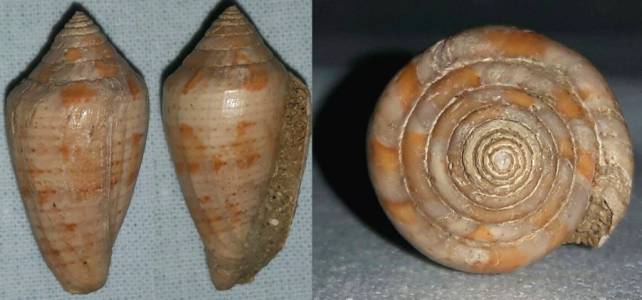
|
- Conus
pelagicus
mm.
28 x 14 mm.
-
[Stefano Granelli]
-
|
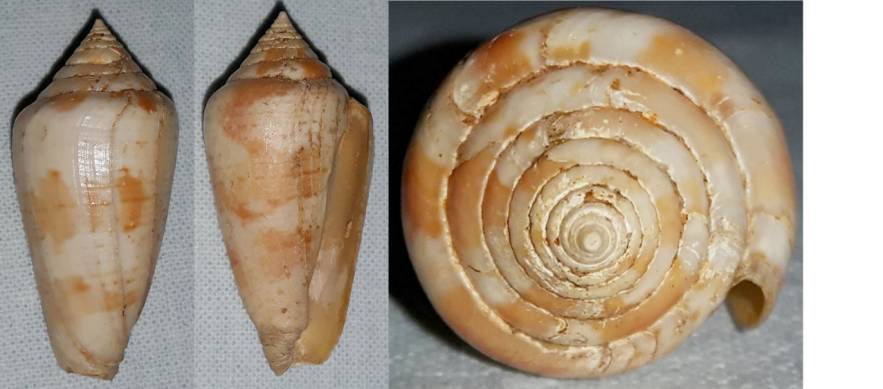
|
- Conus
pelagicus
mm.
32 x 15
-
Rio Stramonte
-
[Stefano Granelli]
Il
Cono colorito Conus coloratus Nob. Questa specie ha molta
analogia, per la grandezza, con la precedente (conus pelagicus);
ma ne diversifica per la sua spira, ch’ è più elevata, e i di
cui giri sono un poco concavi alla loro parte superiore, e per le
costole circolari che si veggono alla sua base.E’ una fra le
conchiglie fossili sulle quali abbiamo osservata maggior quantità
di colori; sono rossi biondi e distribuiti su tutta la sua
superficie; alcuni in piccole sbarre interrotte che formano linee
circolari, e gli altri in marezzature; indipendentemente da
questi colori rossi biondi, si veggono dei nastri circolari
i quali hanno una leggiera tinta paonazza. Questa specie si
trova nel Piacentino.
|
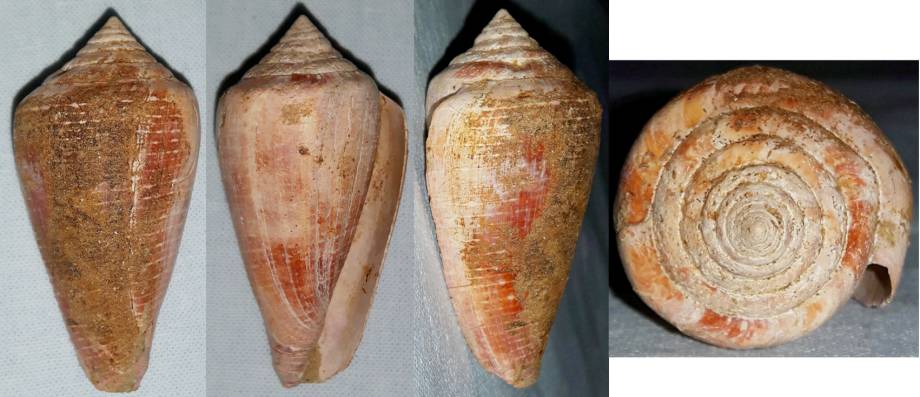
|
- Conus
pelagicus -
mm. 46,0 x 23,0
-
Pliocene – Montezago - [Stefano Granelli]
-
-
La colorazione di questo esemplare è formata da un fondo di
colore rossastro con flammule dello stesso colore sulle spire.
|
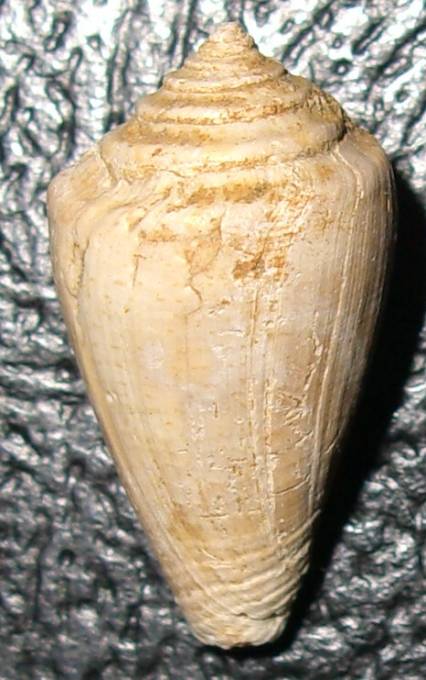
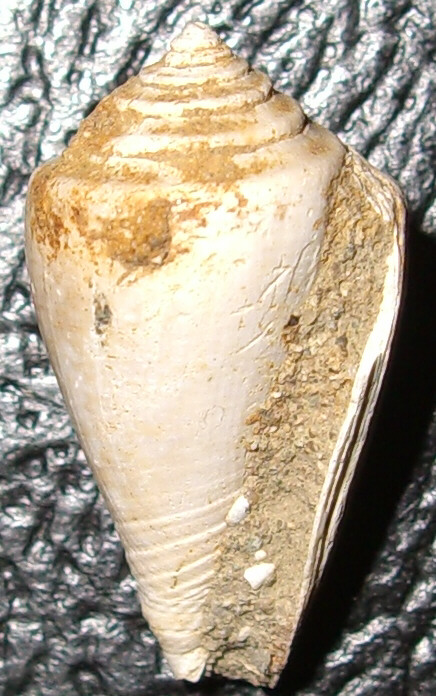
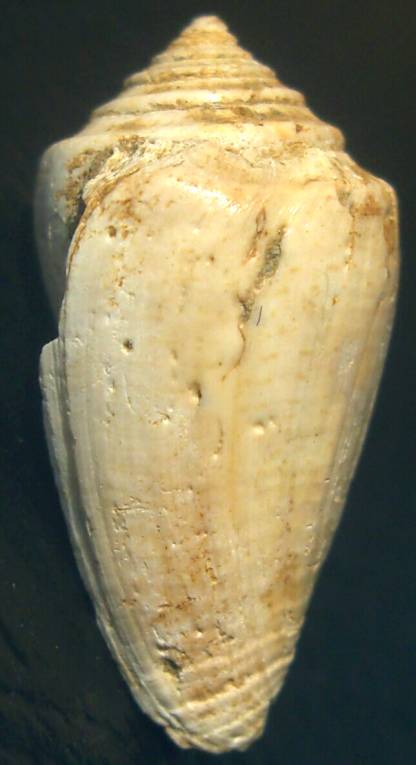
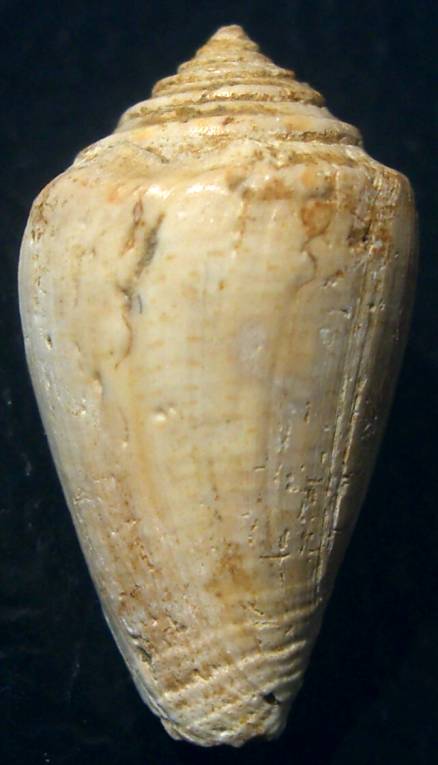
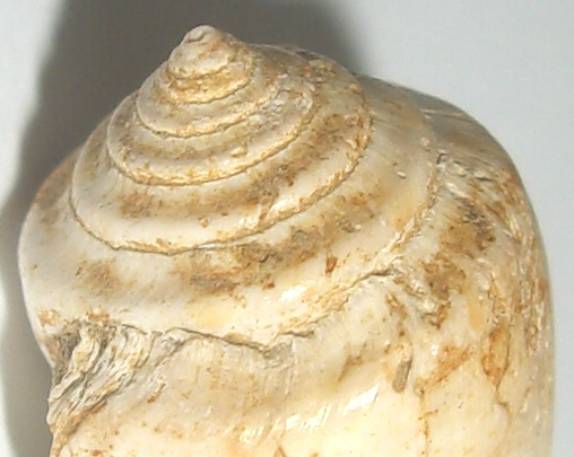
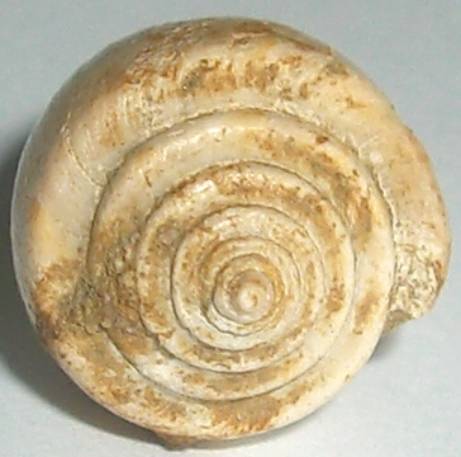
|
-
- Conus
pelagicus
mm.
16,5 x 9,2
-
Pliocene – Pietrafitta (Toscana)
-
[Colorazione ancora presente]
-
[AZFC N. 243-31]
-
|
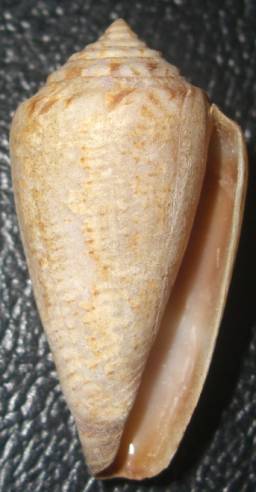
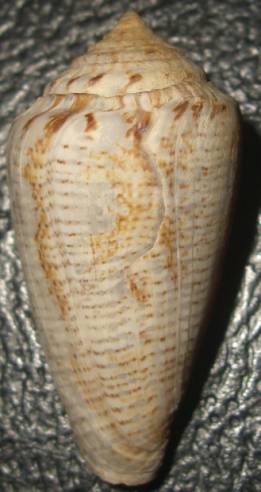
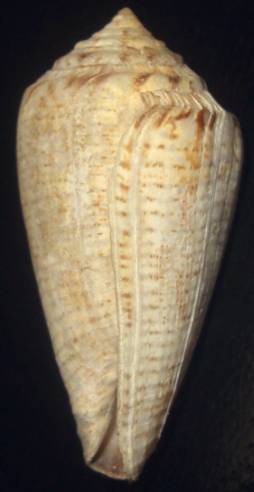
|
-
- Conus
pelagicus [AZRC
547 – 49]
-
Brocchi,
1814
-
28,2 x 14,8 mm. – Is. Kerkennah (Tunisia) – 04/2010
|
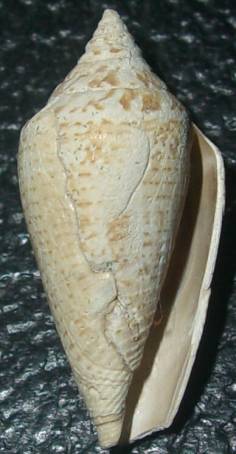
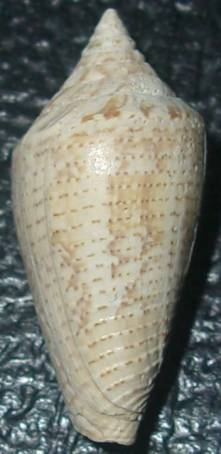
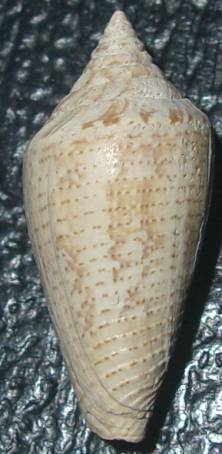
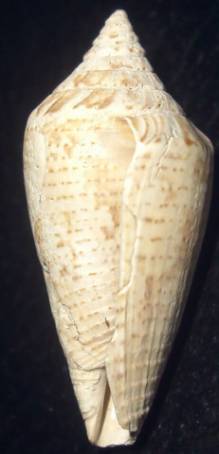
|
-
- Conus
pelagicus [AZRC
547-55]
-
(Brocchi,
1814)
-
17,4
x 8,1 mm. – Lampedusa – pescato
a 16 m. tra posidonie da Aldo Brancato
-
|
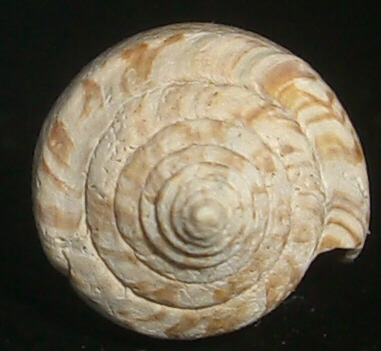
|
|
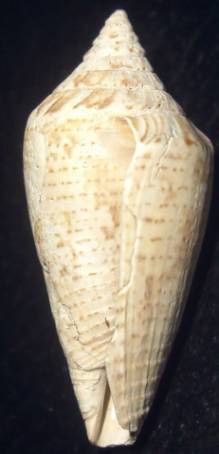
|
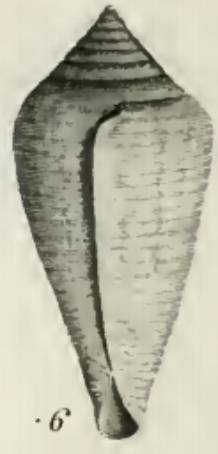
|
-
-
Conus
pelagicus [AZRC
547-55]
-
(Brocchi,
1814)
-
17,4 x 8,1 mm. – Lampedusa
-
-
Alla base di questa immagine, nella parte destra, si individuano
con facilità le strie assiali che incrociano le strie spirali,
che così danno alla superficie un aspetto quadrettato.
-
|
- Conus
pelagicus (3)
|
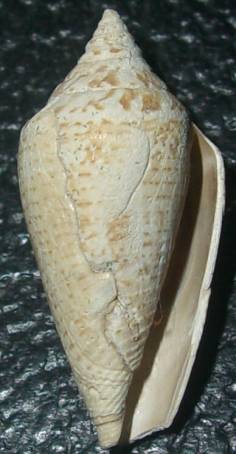
|
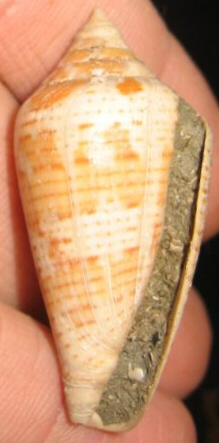
|
-
-
Conus
pelagicus [AZRC
547-55]
-
(Brocchi,
1814)
-
17,4 x 8,1 mm. – Lampedusa – 16 m.
-
|
-
-
Conus
pelagicus
-
Pliocene piacentino
-
|
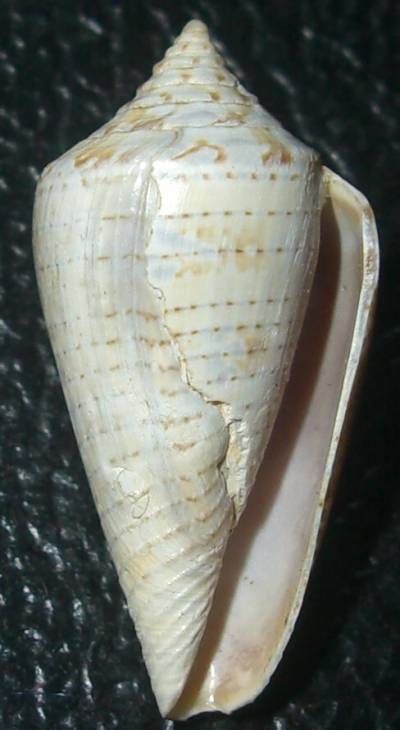
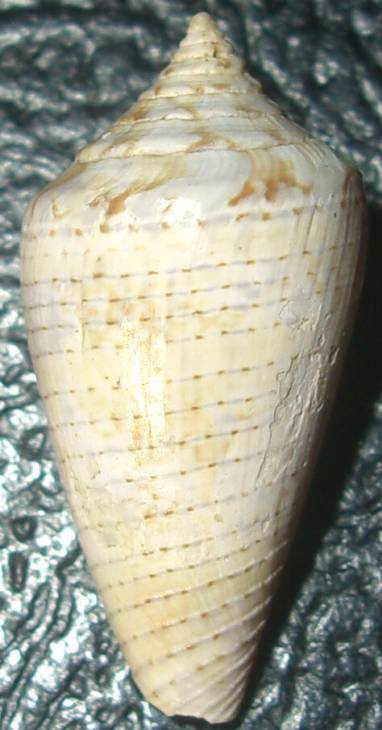
|
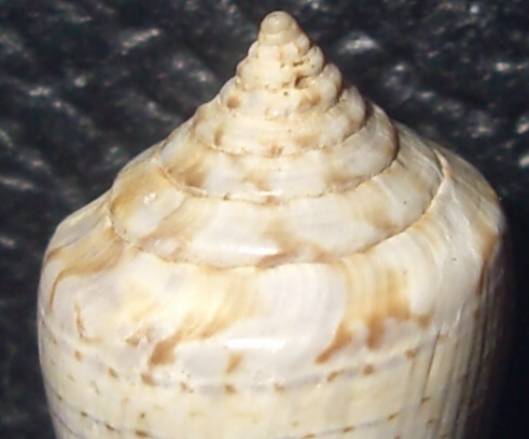
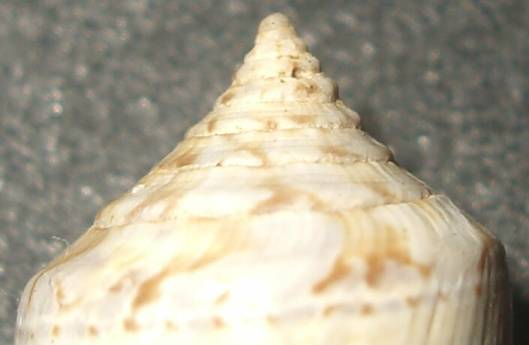
|
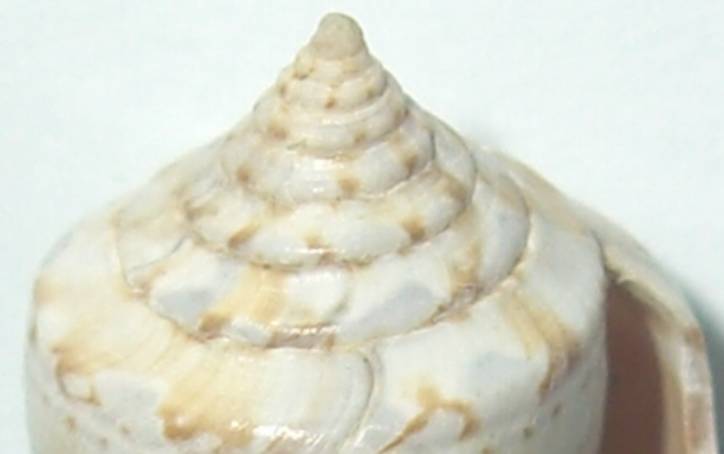
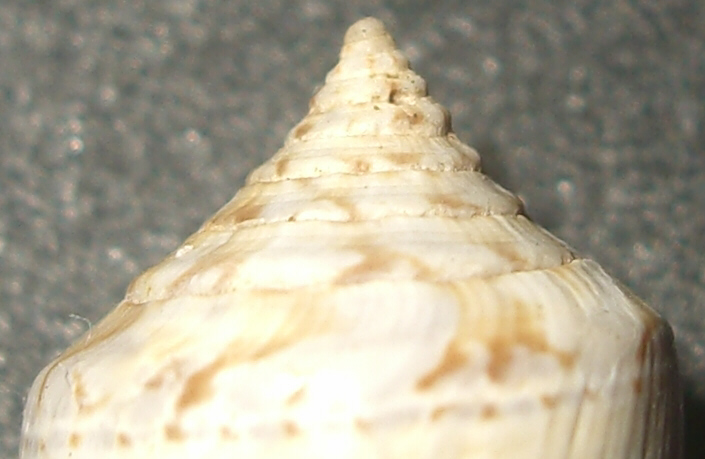
|
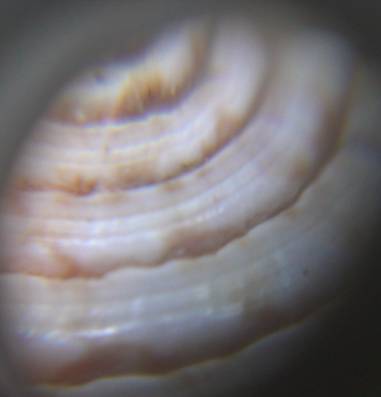
|
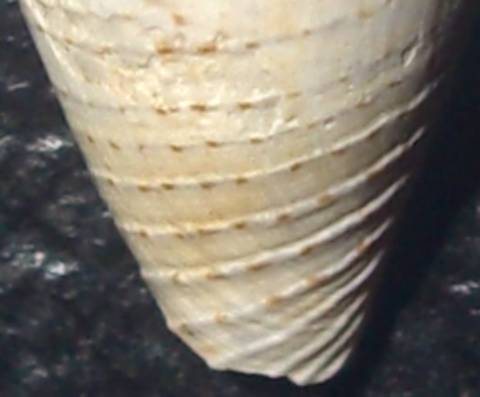
|
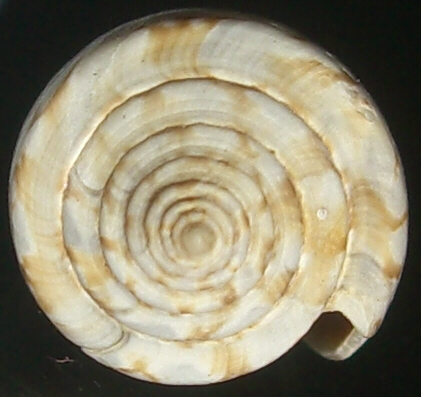
|
-
- Conus
pelagicus
17,8
x 9 mm.
-
Lampedusa – 16 m. tra posidonie
-
[AZFC 243-34]
-
|
|
|
|
|
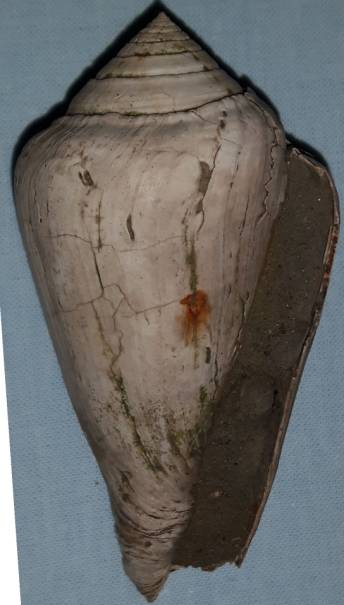
|
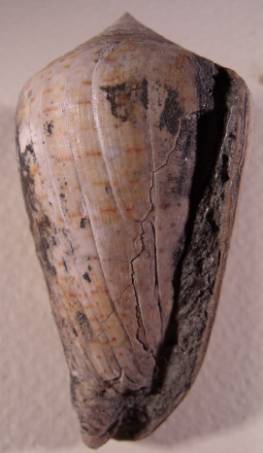
|
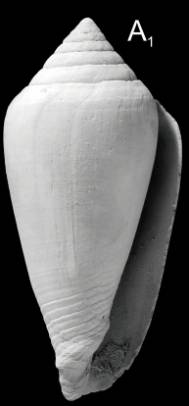
|

|
-
Conus pelagicus
-
mm. 80
-
[Stefano Granelli- Piacenza - Piacenziano]
-
|
-
Conus pelagicus
-
mm. 60
-
( www.paleofox.it )
|
-
Conus
pelagicus (7)
-
Figs 19A Bujtur ( Romania)
-
SL: 53.6 mm, MD: 24.9 mm
-
NHMW 1861
|
- Conus
pelagicus
-
Miocene,
Burdigaliano, Italia, TO, Baldissero, 51 mm
-
[Giancarlo
Paganelli]
|
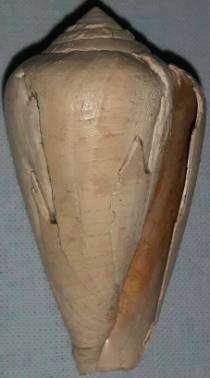
|
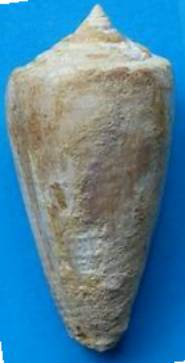
|
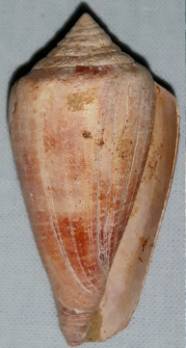
|

|

|
-
Conus
pelagicus
-
mm.
50 x 27
-
[Stefano Granelli]
|
-
Conus pelagicus karamanensis
-
Kozlubucak, Karaman (Turchia) mm. 48
|
-
Conus
pelagicus
-
mm. 46,0 x 23,0
-
Pliocene – Montezago
-
[Stefano Granelli]
|
- Conus
pelagicus
-
Taf.3
fig. 4 (11)
-
mm.
45 x 21
|
- Conus
pelagicus
(10)
-
TAV
XVIII – fig.4
-
n° i 4668, olotipo (h = 42,5 mm)
-
Museo Civico di Storia Naturale di Milano
|
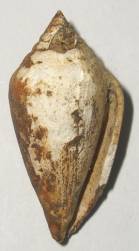
|
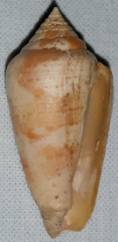
|
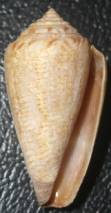
|

|

|

|

|
-
Conus pelagicus
-
mm. 33,2 x 16,5
-
Miocene
– Badeniano
-
Letkes
-
[AZFC N. 243-33]
|
-
Conus pelagicus
-
mm. 32 x 15
-
Rio Stramonte
-
[Stefano Granelli]
|
-
Conus
pelagicus
-
28,2 x 14,8 mm.
-
Is. Kerkennah (Tunisia)
-
[AZRC 547 – 49]
|
-
Conus pelagicus
-
mm. 27 x 12
-
[Stefano Granelli]
|
-
Conus
pelagicus
-
17,8
x 9 mm.
-
Lampedusa – 16 m. tra posidonie
-
[AZFC 243-34]
|
-
Conus
pelagicus
-
17,4 x 8,1 mm.
-
Lampedusa
-
- 16 m.
-
[AZRC 547-55]
|
-
Conus pelagicus
-
mm.
16,5 x 9,2
-
[AZFC N. 243-31]
|
|
|
|
|
|
|
|
|
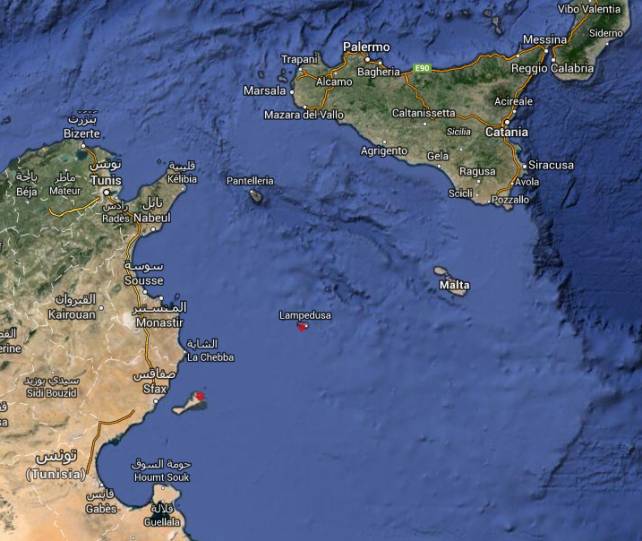
·
Lampedusa
|


|
·
Is.
Kerkennah
|


|
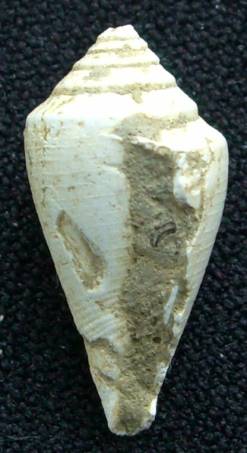
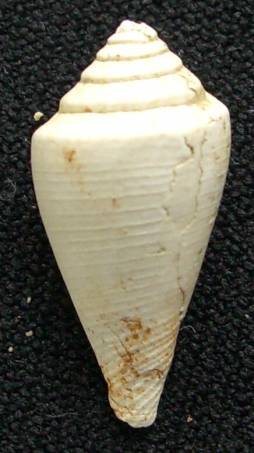
|
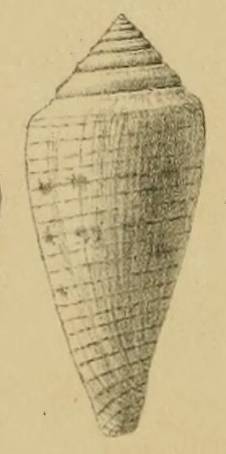
|
-
-
Conus
pelagicus astensiscalaris mm.
16,4 x 8,1- [AZFC
N. 325-00]
-
Pliocene – Palaia / Montefoscoli (Toscana)
-
|
-
-
Conus
pelagicus astensiscalaris
-
Tav. IX n. 20
-
|
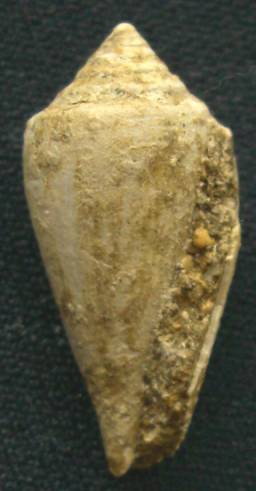
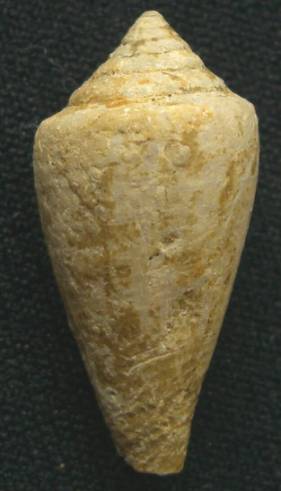
|
|
-
-
Conus
(Chelyconus) veridicus
-
mm. 21,9 x 10,2
-
Eocene
(Luteziano) -
Nogarole (Veneto)
-
[AZFC N. 323-01]
-
-
Le pareti dell’ultimo giro sono meno lineari, rispetto a
quelle del Conus raristriatus.
|
-
|
Bibliografia Consultata
(1)
- F. Sacco (1893) “I molluschi dei terreni terziarii del Piemonte
e della Liguria – Parte XIII – Conidae - Fascicolo primo”,
Torino, Carlo Clausen Libraio della R. Accademia delle Scienze
(2) -
Carlo Chirli (1997) “Malacofauna pliocenica toscana - vol. I -
Superfamiglia Conoidea”, Firenze
(3)
- G. Brocchi (1814) “Conchiologia fossile subapennina con
osservazioni geologiche sugli apennini e sul suolo adiacente”,
Milano
(4)
- Rafael MUÑIZ SOLÍS”El género Conus (Gastropoda,
Neogastropoda) del Plioceno de Estepona (Málaga, España)” -
Sociedad Española de Malacología Iberus, 17 (1): 31-90, 1999
(5)
– Wilson Mark (2016) “Wooster’s
Fossil of the Week: A conid gastropod from the Pliocene of Cyprus”
(6)
– Conidae (Neogastropoda) assemblage from the Middle Miocene of
the Făget Basin (Romania) in the collection
of the Hungarian Natural History Museum,
Budapest
(7)
- Harzhauser,
Mathias & Landau, Bernard, 2016, A revision of the Neogene
Conidae and Conorbidae (Gastropoda) of the Paratethys Sea, Zootaxa
4210 (1), pp. 1-178:
106-108
(8)
– Landau, Harzhauser, Islamoglu, Marques da Silva (2013) “
Systematics and palaeobiogeography of the gastropods of the middle
Miocene (Serravallian) Karaman Basin, Turkey“
(9)
– (2023) Late Miocene Conidae (Mollusca: Gastropoda) of Crete,
Greece. Part 3: subgenus Conus (Monteiroconus) da Motta, 1991
Christos Psarras*, Didier Merle, Assimina Antonarakou & Efterpi
Koskeridou
(10)
- Pinna G. & Spezia L. - A catalogue of the Types kept in the
collection of the Museo Civico di Storia Naturale di Milano. V.
Types of fossil Gastropods
(11)
- Hoernes, R.,
1856. Hoernes,
R., 1856. Abhandlungen
der Kaiserlich-Koniglichen Geologischen Reichsanstalt,
3
